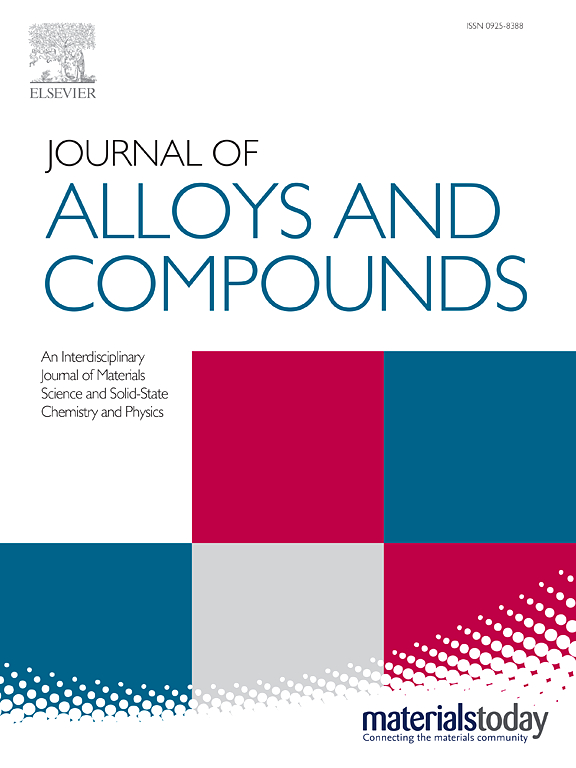Study of fracture toughness and crack tip deformation behaviors of highly plastic Mg-2Y-0.6Zr alloys
IF 5.8
2区 材料科学
Q2 CHEMISTRY, PHYSICAL
引用次数: 0
Abstract
The influence of recrystallization degree on the tensile mechanical properties, impact toughness, and fracture toughness of the Mg-2Y-0.6Zr alloy was investigated. The microstructure and deformation mechanisms of Mg-2Y-0.6Zr alloys at different extrusion ratios were analyzed using optical microscopy (OM), scanning electron microscopy (SEM), and electron backscatter diffraction (EBSD). The fracture toughness testing is conducted through fatigue crack propagation and three-point bending methods. The findings indicate that the extruded alloy displays a heterogeneous structure, featuring three distinct microstructural characteristics: unrecrystallized grains, equiaxed recrystallized grains, and fine-grained bands. As the extrusion ratio decreases, the proportion of unrecrystallized grains increases, while the size of the recrystallized grains decreases. Samples with smaller extrusion ratios have lower plasticity (EL of 31%) and impact toughness (αk of 16.19 J·cm-2), higher yield strength (YS of 153 MPa) and fracture toughness (KⅠC of 27.1 MPa·m1/2) than samples with the largest extrusion ratios (EL of 44%, YS of 105 MPa, αk of 18.35 J·cm-2, KⅠC of 22.1 MPa·m1/2). The rare earth texture and the fine-grained bands in samples with large extrusion ratios ensure the homogeneity of their plastic deformation and are the main reasons for their excellent plasticity. The deformation behavior of grains at the crack tip of the material was subjected to twin variant Schmid factor analysis and in-grain misorientation axis (IGMA) distribution, which showed that tensile twinning activity was higher in alloys with larger recrystallized grain sizes, whereas plastic deformation was dominated by basal slip in alloys with smaller recrystallized grain sizes. In the fracture toughness testing, cracks mainly propagated along grain boundaries, exhibiting deflections and branching. The presence of large, hard unrecrystallized grains significantly hinders crack propagation, which is a key factor for the high fracture toughness observed in the ER12 samples. Increased activity of tensile twins provides additional potential pathways for crack growth, and the initiation of tensile twins within the unrecrystallized grains facilitates easier crack propagation. Consequently, higher tensile twin activity is considered to reduce the material's fracture toughness.求助全文
约1分钟内获得全文
求助全文
来源期刊

Journal of Alloys and Compounds
工程技术-材料科学:综合
CiteScore
11.10
自引率
14.50%
发文量
5146
审稿时长
67 days
期刊介绍:
The Journal of Alloys and Compounds is intended to serve as an international medium for the publication of work on solid materials comprising compounds as well as alloys. Its great strength lies in the diversity of discipline which it encompasses, drawing together results from materials science, solid-state chemistry and physics.
 求助内容:
求助内容: 应助结果提醒方式:
应助结果提醒方式:


